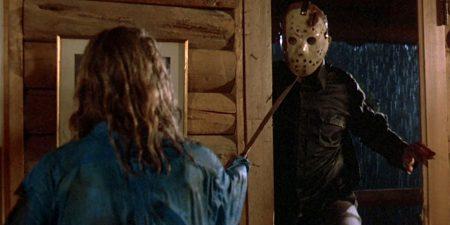
Michael Foster-Sanders
editor-in-chief
When director Sean S. Cunningham and screenwriter Victor Miller threw together a cheap, quick-cash grab film named Friday the 13th to capitalize on the exploding horror movie slasher genre in 1980, little did they know they would create a franchise that has spanned four decades.
The 12-movie series can be broken down into three sagas that overlap each other, but the focus here will be the first four films.
The first film simply titled Friday the 13th tells the tragic backstory of Jason Voorhess’s death, due to drowning by non-supervision of camp counselors Sept. 13,1957 at Camp Crystal Lake. The downing and murder of two counselors shuts down the camp.
Closed for over two decades, entrepreneur Steve Christy decides to open the camp again despite the warning from local townspeople that the place is cursed and misfortune comes to those who try to reopen the camp.
Christy decides not to take the townspeople’s ramblings seriously and hires help to renovate the camp, but when the help starts dying one by one will anyone survive the night?
Friday the 13th works because it’s more of Whodunit mystery and horror mashup and not a flat out horror movie that will have viewers racking their brain about who the killer is.
Legendary special effects artist Tom Savini makes each kill memorable and gory, which sets it apart from its competitors at the time.
Composer Harry Manfredini’s haunting score in the soundtrack for this day of death, and the famous Ki-Ki-Ki-Ki Ma-Ma-Ma-Ma makes its debut here also.
The sequel takes place four years after the aftermath of the murders of the first film. The lone survivor Alice Hardy is trying to put the pieces of her life back together after her tragic experience at Camp Crystal Lake. Someone enters her apartment, and kills her with no regard.
Across from Camp Crystal Lake is Packanack Lodge, and it’s being used as a place to train camp counselors. Paul, the head supervisor of the facility, offers some of the counselors a last night on the town before the training starts. The two cars fill up fast forcing some of the counsellors to stay behind. The killer uses this opportunity to start their massacre.
It’s rare that a sequel is better than the original movie, and part two trumps the first film in almost every way. Where the first film tends to drag because of the Whodunit plot with red herrings, the sequel starts off action packed, and keeps the pace throughout.
The series main villian Jason Voorhess makes his first appearance as a adult to avenge the murder of his mother. He sports a burlap sack as a mask with a single hole to see. Clearly as homage to the real life serial killer in Texarkana known as the Phantom Killer of 1946.
This Jason isn’t the unstoppable force like he is in the later movies. He makes mistakes while hunting would-be victims, which makes these scenes even more intense.
The only thing that hurt this movie is that Tom Savini declined to come back for special-effects duty, which the kills are kind of basic.
Part three lore takes place in between the second and first movie.Jason attacks Chris Higgins after a family fight in which she flees to the surrounding woods of Higgins Haven, which also sits on Crystal Lake.
Out of the original saga, Friday the 13th Part three is the second worst movie. By 1982 copycat movies trying to cash in on the slasher-movie formula started to wear thin on the public with the same wash-rinse-repeat formula.
What this movie does have going for it is Jason finally gets his iconic hockey mask, which is a Halloween-costume staple, and it’s attempt to bring the kills in 3D during its theatrical run.
In 1984 Paramount studios had finally had enough being tied to gruesome horror movies. The controversy of slasher films being misogynistic hurt. And famous the late film critic Gene Siskel likened the films to a person getting out of their car to view a horrible car accident, pandering to lurid curiosity and all around tasteless. The film studio decided to kill off Jason once and for all on Friday the 13th: The Final Chapter.
After being presumed dead after a blow to the head with an axe in Part III, Jason rises again from the coroner office and continues his killing spree.

In the sequel to the original film Jason Voorhees seeks revenge after seeing his mother decapitated. He did not get his trademark hockey mask until the third movie.
This movie is the best out of the original four, and you can tell Paramount pulled out all stops so Jason can ride off into the sunset of the horror movie hall of fame.
Jason Zito directed and special effects king Tom Savini wasback on board. Jason is pure evil in this film, and the viewer will feel this in the way Jason dispatches his victims.
Corey Feidman knocks it out of the park as the lovable geeky 12-year old Tommy Jarvis. Most child actors can’t show range, but Feldman nails it going from an optimistic child whose innocence is robbed from him by being at the wrong place at the wrong time.
Paramount could not keep Jason dead after the movie earned $33 million at the box offices.
These movies can be viewed through the majority of streaming services, or the new 12-disc Blu-Ray box set released by Shout Factory.
So visit an era in horror movies where jump scares weren’t the focal point of the movie, and practical effects made for realism in films.

